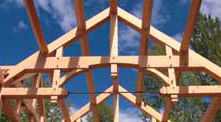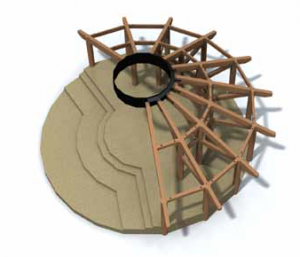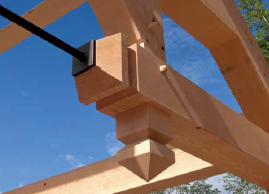Timber and steel–a robust marriage
from Daizen News 1 Oct 2011
In look, feel, and function, steel and timber
blend very well. Steel is, after all, derived from naturally-occurring
materials. And its strength is a welcome assist to challenging loads. In the
image below, a steel tension rod adds support to a hammer-beam truss.
Where the tension occurs in a joint, steel is
often used to meet the structural load demand. Steel placed to help bear loads
also presents an opportunity to include some unique detail, if desired.
Several tools and materials further support the melding of steel and timber.
CNC technology provides laser cut capabilities to shape the steel plate, with
precise, free-curve cuts that enhance design potential. And giving the
steel a black powder coat results in superior contrast and “finish” to the
ruddy tones of wooden posts and beams.
Incorporating structural steel is not for the faint-hearted, though. Of key importance is the actual steel to wood connection, especially when using a steel tension rod.
It’s not possible to align steel plate holes to the timber holes unless there are tolerances. If the holes don’t line up, the thread on the ready rod may scratch at the edge of the steel hole.
To avoid this, we do a dry fit of the timber to the plate before drilling the holes on the steel plate. This is easily done with a magnet drill.
Since the timber is the more active material (shrinking, etc.), it’s best to get the timber frame fabricator to control these steel plate connections. If you separate these components, the chance of a resulting tolerance issue is very high.
Interested in finding out more?
At Daizen, we ensure client expectations and understanding of processes are met through all phases of our work, from structural design and engineering to fabrication of timber frames and assembly and installation.



